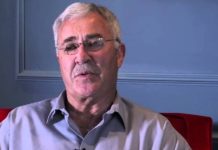
[miningmx.com] — THE second New African Mining Fund (NAMF2) intended to back early stage mining projects in Africa has been launched with $73.6m in the kitty so far.
Announcing this in Johannesburg on Wednesday, NAMF principal Neil Gardyne said the fund had a further 12 months in which to raise extra funds and was targeting a final figure of up to $300m.
Once the final amount had been raised by end-January 2012, the fund would be closed and would then have an eight-year life.
The first five years were earmarked to commit funds to projects, and the final three years would be used for “harvesting’ during which profits would be realised.
The first NAMF fund raised $86m in March 2003 and had now realised 98% of its value.
Gardyne said the internal rate of return on NAMF1 to the fund’s backers had been 39%, despite the fact that two of the 10 projects the fund backed had to be written off.
These were an alluvial diamond project on South Africa’s west coast and a gold project in Cameroon.
Gardyne said: “The gold project in Cameroon turned out to be a bridge too far for us, while mining alluvial diamonds is a high risk sector in what is already a high risk business.’
He singled out two of the most successful projects backed by NAMF1 as the Somkhele anthracite mine in KwaZulu-Natal – which was sold to JSE-listed Petmin – and the Kalumbila copper deposit in Zambia being developed by Kiwara Plc, which was subsequently sold to First Quantum.
This is now being developed by First Quantum as its Trident project at a cost of about $1bn, and will create around 2,000 jobs in an impoverished, remote area of north-west Zambia.
Rules for the NAMF2 fund specifically exclude investment in diamonds and uranium. No more than 25% of the fund can be invested in any one commodity, and a maximum of 15% is to be invested in any one company.
Gardyne said uranium and diamonds had been excluded because the mandates of several of the funds backing NAMF2 did not cover investment in radioactive minerals.
Some of the backers were concerned about issues around the trade in so-called blood diamonds, which is supposed to be controlled by the Kimberley Process.
Asked whether his experience with the failed diamond project during NAMF1 had anything to do with the prohibition, Gardyne replied: “We have become more cautious on diamond projects.
“As a geologist, I have always been wary of alluvial diamond projects because they usually require deep pockets and long arms to develop.
“It’s an expensive business to prove one up because you have to put up a plant and get into quasi-production mode to finalise the work needed to quantify the ore body and the yield.’
The backers of NAMF2 at this stage are the International Finance Corporation, African Development Bank, Development Bank of South Africa, SIFEM (the Swiss development finance institution), DEG (the German development finance institution) and NAMF management.
Gardyne said it taken more than two years to get the NAMF2 fund up and running because of the difficult conditions in the equity and finance markets.
“We started looking for money in 2008 just as Lehman Brothers collapsed, triggering the global financial crisis,’ he said.
Gardyne added it had proved just as difficult to find backers for the NAMF1 fund; a number of SA mining companies had put up funds for this but had not supported the NAMF2 fund.
He said: “The creation of NAMF1 followed the Bakubung conference in 2000, at which it was agreed there was a need to provide finance for new mining entrepreneurs.
“The SA mining groups at that time committed themselves to support that initiative, but no longer feel that they should get involved in this a second time around.’
Gardyne said any mining company or entrepreneur could apply to NAMF for backing. The fund would focus on projects at the stages of early exploration and development, which is where most of the value-add in a mining project was created.
He said: “We will listen to everybody, including listed mining companies, although we would prefer to support ventures that are still private.
“We assessed more than 300 projects for NAMF1, most of which were rejected immediately before selecting the 10 that we finally agreed to back.’









